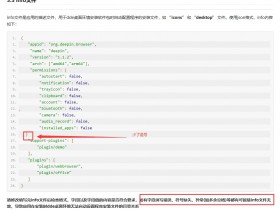- A+
所属分类:.NET技术
使用 EPPlus 封装的 excel 表格导入功能
前言
最近做系统的时候有很多 excel导入 的功能,以前我前后端都做的时候是在前端解析,然后再做个批量插入的接口
我觉着这样挺好的,后端部分可以做的很简单(很偷懒的)
但是因为各种各样的原因,最终还是需要做个专门的 excel导入 接口
遇到的问题
由于之前从来没有在后端部分处理过表格,所以我选择看一下同事的代码是怎么写的

虽然我之前没写过相关的业务,但是直觉的认为这样写非常麻烦,那个 ExcelHelper 好像也没干什么事,我希望一套操作下来可以把 excel 转成能够直接传入 AddRange 进行批量新增的实体集合
所以我就决定自己封装。
结果展示(略)

public ICollection<TestDto> ExcelImport(IFormFile file) { var config = ExcelCellOption<TestDto> .GenExcelOption("姓名", item => item.Name) .Add("年龄", item => item.Age, item => int.Parse(item)) .Add("性别", item => item.Gender, item => item == "男") .Add("身高", item => item.Height, item => double.Parse(item)); ICollection<TestDto> result = ExcelOperation.ExcelToEntity(file.OpenReadStream(), config); return result; } 最终可以直接生成"初始化"数据的 result
代码/设计/想法
我希望使用的时候通过传入 表格字段 与 数据实体.属性 的关系集合
实现解析表格的同时生成对应的 实体对象
然后我对上述 关系 的定义如下
public class ExcelCellOption<T> { /// <summary> /// 对应excel中的header表头(title) /// </summary> public string ExcelField { get; set; } /// <summary> /// 对应字段的属性(实际上包含PropName) /// </summary> public PropertyInfo Prop { get; set; } /// <summary> /// 就是一个看起来比较方便的标识 /// </summary> public string PropName { get; set; } /// <summary> /// 转换 表格 数据的方法(委托) /// </summary> public Func<string, object> Action { get; set; } } 之后给他加了个静态方法 GenExcelOption<E> 生成关系集合 ICollection<ExcelCellOption<T>>
public static ICollection<ExcelCellOption<T>> GenExcelOption<E>(string field, Expression<Func<T, E>> prop, Func<string, object> action = null) { var member = prop.GetMember(); return new List<ExcelCellOption<T>>{ new ExcelCellOption<T> { PropName = member.Name, Prop = (PropertyInfo)member, ExcelField = field, Action = action } }; } 为了方便之后加新的配置项
给返回类型 ICollection<ExcelCellOption<T>> 搞个扩展方法 Add
public static class ExcelOptionExt { public static ICollection<ExcelCellOption<T>> Add<T, E>(this ICollection<ExcelCellOption<T>> origin, string field, Expression<Func<T, E>> prop, Func<string, object> action = null) { var member = prop.GetMember(); origin.Add(new ExcelCellOption<T> { PropName = member.Name, Prop = (PropertyInfo)member, ExcelField = field, Action = action }); return origin; } } 使用的时候就可以根据excel表格生成对应的 关系集合 (配置)
var config = ExcelCellOption<TestDto> .GenExcelOption("姓名", item => item.Name) .Add("年龄", item => item.Age, item => int.Parse(item)) .Add("性别", item => item.Gender, item => item == "男") .Add("身高", item => item.Height, item => double.Parse(item)); 有了配置之后需要根据配置解析excel生成数据实体了
写了个方法如下
public class ExcelOperation { /// <summary> /// 将表格数据转换为指定的数据实体 /// </summary> public static ICollection<T> ExcelToEntity<T>(Stream excelStream, ICollection<ExcelCellOption<T>> options) { using ExcelPackage pack = new(excelStream); var sheet = pack.Workbook.Worksheets[1]; int rowCount = sheet.Dimension.Rows, colCount = sheet.Dimension.Columns; // 获取对应设置的 表头 以及其 column下标 var header = sheet.Cells[1, 1, 1, colCount ] .Where(item => options.Any(opt => opt.ExcelField == item.Value?.ToString().Trim())) .ToDictionary(item => item.Value?.ToString().Trim(), item => item.End.Column); List<T> data = new(); // 将excel 的数据转换为 对应实体 for (int r = 2; r <= rowCount; r++) { // 将单行数据转换为 表头:数据 的键值对 var rowData = sheet.Cells[r, 1, r, colCount] .Where(item => header.Any(title => title.Value == item.End.Column)) .Select(item => new KeyValuePair<string, string>(header.First(title => title.Value == item.End.Column).Key, item.Value?.ToString().Trim())) .ToDictionary(item => item.Key, item => item.Value); var obj = Activator.CreateInstance(typeof(T)); // 根据对应传入的设置 为obj赋值 foreach (var option in options) { if (!string.IsNullOrEmpty(option.ExcelField)) { var value = rowData.ContainsKey(option.ExcelField) ? rowData[option.ExcelField] : string.Empty; if (!string.IsNullOrEmpty(value)) option.Prop.SetValue(obj, option.Action == null ? value : option.Action(value)); } // 可以用来初始化与表格无关的字段 如 创建时间 Guid主键 之类的东西 else option.Prop.SetValue(obj, option.Action == null ? null : option.Action(string.Empty)); } data.Add((T)obj); } return data; } } 最终调用
ExcelOperation.ExcelToEntity(file.OpenReadStream(), config) 传入文件流和配置集合即可
完整代码
using System; using System.Collections.Generic; using System.IO; using System.Linq; using System.Linq.Expressions; using System.Reflection; using AutoMapper.Internal; using OfficeOpenXml; namespace XXX.XXX.XXX.XXX { public class ExcelOperation { /// <summary> /// 将表格数据转换为指定的数据实体 /// </summary> public static ICollection<T> ExcelToEntity<T>(Stream excelStream, ICollection<ExcelCellOption<T>> options) { using ExcelPackage pack = new(excelStream); var sheet = pack.Workbook.Worksheets[1]; int rowCount = sheet.Dimension.Rows, colCount = sheet.Dimension.Columns; // 获取对应设置的 表头 以及其 column var header = sheet.Cells[1, 1, 1, sheet.Dimension.Columns] .Where(item => options.Any(opt => opt.ExcelField == item.Value.ToString())) .ToDictionary(item => item.Value.ToString(), item => item.End.Column); List<T> data = new(); // 将excel 的数据转换为 对应实体F for (int r = 2; r <= rowCount; r++) { // 将单行数据转换为 表头:数据 的键值对 var rowData = sheet.Cells[r, 1, r, colCount] .Where(item => header.Any(title => title.Value == item.End.Column)) .Select(item => new KeyValuePair<string, string>(header.First(title => title.Value == item.End.Column).Key, item.Value?.ToString())) .ToDictionary(item => item.Key, item => item.Value); var obj = Activator.CreateInstance(typeof(T)); // 根据对应传入的设置 为obj赋值 foreach (var option in options) { if (!string.IsNullOrEmpty(option.ExcelField)) { var value = rowData.ContainsKey(option.ExcelField) ? rowData[option.ExcelField] : string.Empty; if (!string.IsNullOrEmpty(value)) option.Prop.SetValue(obj, option.Action == null ? value : option.Action(value)); } // 可以用来初始化与表格无关的字段 如 创建时间 Guid主键 之类的东西 else option.Prop.SetValue(obj, option.Action == null ? null : option.Action(string.Empty)); } data.Add((T)obj); } return data; } } public class ExcelCellOption<T> { /// <summary> /// 对应excel中的header字段 /// </summary> public string ExcelField { get; set; } /// <summary> /// 对应字段的属性(实际上包含PropName) /// </summary> public PropertyInfo Prop { get; set; } /// <summary> /// 就是一个看起来比较方便的标识 /// </summary> public string PropName { get; set; } /// <summary> /// 转换 表格 数据的方法 /// </summary> public Func<string, object> Action { get; set; } public static ICollection<ExcelCellOption<T>> GenExcelOption<E>(string field, Expression<Func<T, E>> prop, Func<string, object> action = null) { var member = prop.GetMember(); return new List<ExcelCellOption<T>>{ new ExcelCellOption<T> { PropName = member.Name, Prop = (PropertyInfo)member, ExcelField = field, Action = action } }; } } public static class ExcelOptionAdd { public static ICollection<ExcelCellOption<T>> Add<T, E>(this ICollection<ExcelCellOption<T>> origin, string field, Expression<Func<T, E>> prop, Func<string, object> action = null) { var member = prop.GetMember(); origin.Add(new ExcelCellOption<T> { PropName = member.Name, Prop = (PropertyInfo)member, ExcelField = field, Action = action }); return origin; } } } 其实这已经是旧版本了
新的版本过几天大概会发
未完待续




